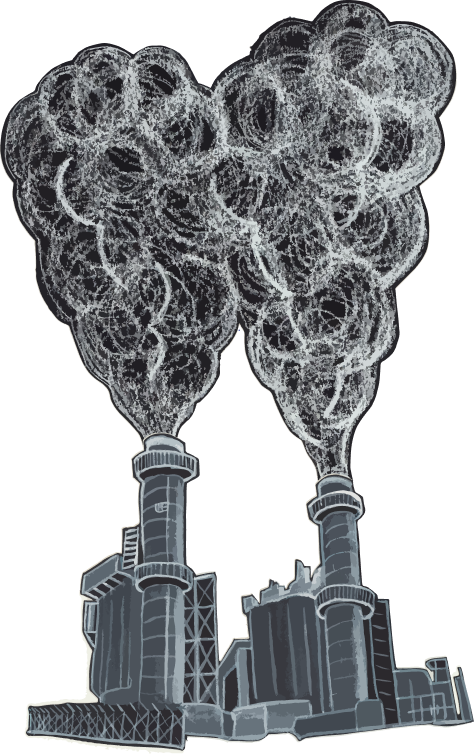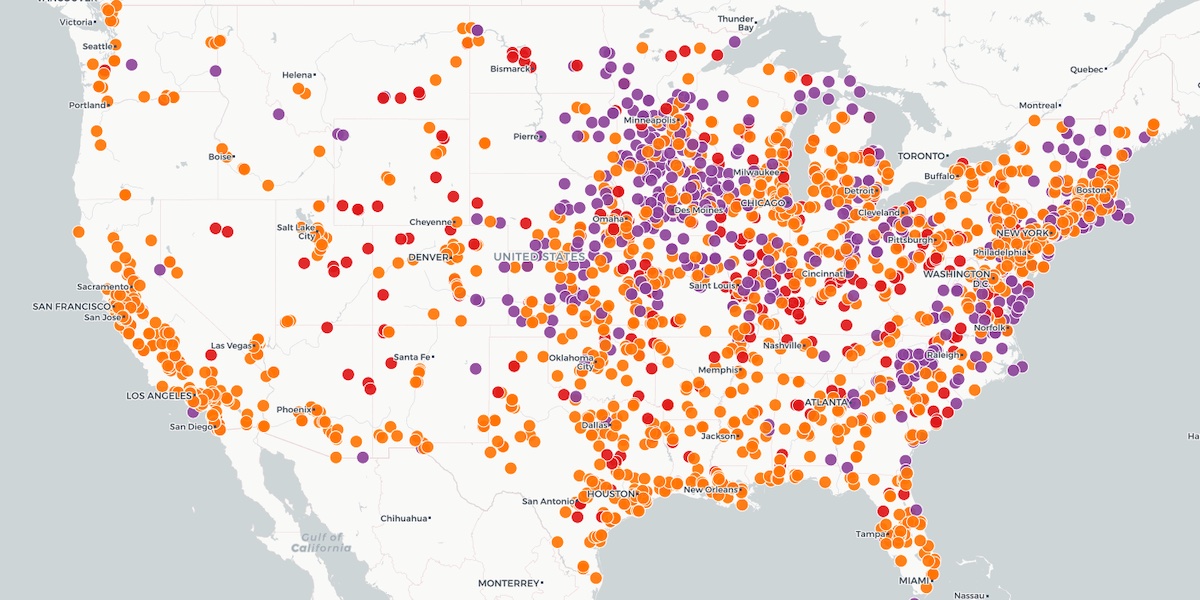Tennessee
Back to mapTo get to zero by 2050, Tennessee must cut emissions by 3.7% a year
Emissions in Tennessee
Million metric tons of carbon dioxide (CO2) [?] equivalent (MTCO2e [?]) emissions
Note: Grey area indicates missing data due to processing delays.
Source: WRI, Mar 2021
This is how we're going to do it
- Boilers and furnaces with heat pumps [?]
- Gas stoves with electric induction stoves [?]
- No-till farming to keep CO2 in the soil
- Capturing methane leaks from landfills
- Capturing CO2 to make emissions-free concrete
- Burning green hydrogen to make emissions-free steel
- Plugging methane leaks from gas pipelines
Decarbonize Our Buildings
8% of Tennessee's climate pollution comes from buildings.
We burn fossil fuels to heat our air, water, and food.
To cut this pollution...
Let's electrify our heat!
We'll replace...
...in all of Tennessee's 3.2 million buildings.
In fact, 58% of appliances in buildings in Tennessee are already fossil fuel free!
That means we only need to electrify the remaining 1.4 million dirty buildings in Tennessee. That's around 50,000 per year.
Source: Microsoft, Mar 2021; NREL, Dec 2021Electrifying all buildings cuts 8% of the pollution.
Decarbonize Our Transport
38% of Tennessee's pollution comes from cars, trucks, trains, and planes.
But mostly from cars.
To cut this pollution,
your next car must be electric.
Or consider going car-free with public transit, bikes/e-bikes, car share, or other alternatives!
There are 2.1 million vehicles in Tennessee and 8,000 are already electric (0.4% of the total).
We need to electrify (or replace) the remaining 2.1 million gas-powered vehicles. That's around 78,000 a year.
Source: DOT, Feb 2021Electrifying all transportation cuts 38% of the pollution.
Decarbonize Our Power
21% of Tennessee's pollution comes from burning coal, gas, and oil to make power.

To cut this pollution...
Put solar panels on your roof!
Then, we'll replace all fossil fuel power plants with solar and wind farms.

...and find good jobs for those workers.
Current Fossil Fuel Power Plants in Tennessee
5 coal plants
Cumberland
Stewart County
2,600 MW
Gallatin
Sumner County
1,918 MW
Kingston
Roane County
1,700 MW
Bull Run
Anderson County
950 MW
Eastman Chemical Company
Sullivan County
194 MW
12 gas plants
Johnsonville
Humphreys County
2,911 MW
Allen
Shelby County
2,782 MW
John Sevier
Hawkins County
1,797 MW
Lagoon Creek
Haywood County
1,625 MW
Gleason Combustion Turbine Plant
Weakley County
568 MW
Brownsville Combustion Turbine Plant
Haywood County
460 MW
Tate & Lyle Loudon Plant
Loudon County
61 MW
Vanderbilt University Power Plant
Davidson County
35 MW
MTSU Power Co-Gen Plant
Rutherford County
15 MW
Mountain Home Energy Center
Washington County
7 MW
University of Tennessee Steam Plant
Knox County
5 MW
Opryland USA
Davidson County
5 MW
2 oil plants
McMinnville
Warren County
24 MW
Powell Valley
Hancock County
22 MW
But wait!
It's not enough to replace our power plants with wind and solar farms.
To power our electric cars and buildings, we need two times the electricity we have today.
In all, we'll need to build 6,000 megawatt (MW) [?] of wind power and 6,000 MW of solar power.
Since the average wind turbine provides 2.75 MW of peak capacity, Tennessee would need to install about 2,000 turbines.
Since Tennessee already has 5 MW of wind and 48 MW of solar, that's 6,000 MW of wind power we need to build and 6,000 MW of solar power. That's around 217 MW of wind power and 224 MW of solar power a year.
Source: EIA, Apr 2022Decarbonizing all dirty power cuts 21% of the pollution.
And gives us zero-emissions power we need to eliminate pollution from buildings and cars!
Other Emissions
The last 33% of Tennessee's climate pollution comes from other sources...
This includes farming, landfills, industry, and leaks from gas pipelines.
There's no one solution to solve these problems, but there are lots of great ideas:
That doesn't mean there's no solution, it just means that clean electrification [?] doesn't help with these problems, and you could fill a whole book with covering all of them. We need to encourage our politicians to invest in researching new solutions and implementing existing solutions to these problems!
Ready to do your part?
Learn how to electrify your own machines and pass local policy to electrify the rest
Take Action